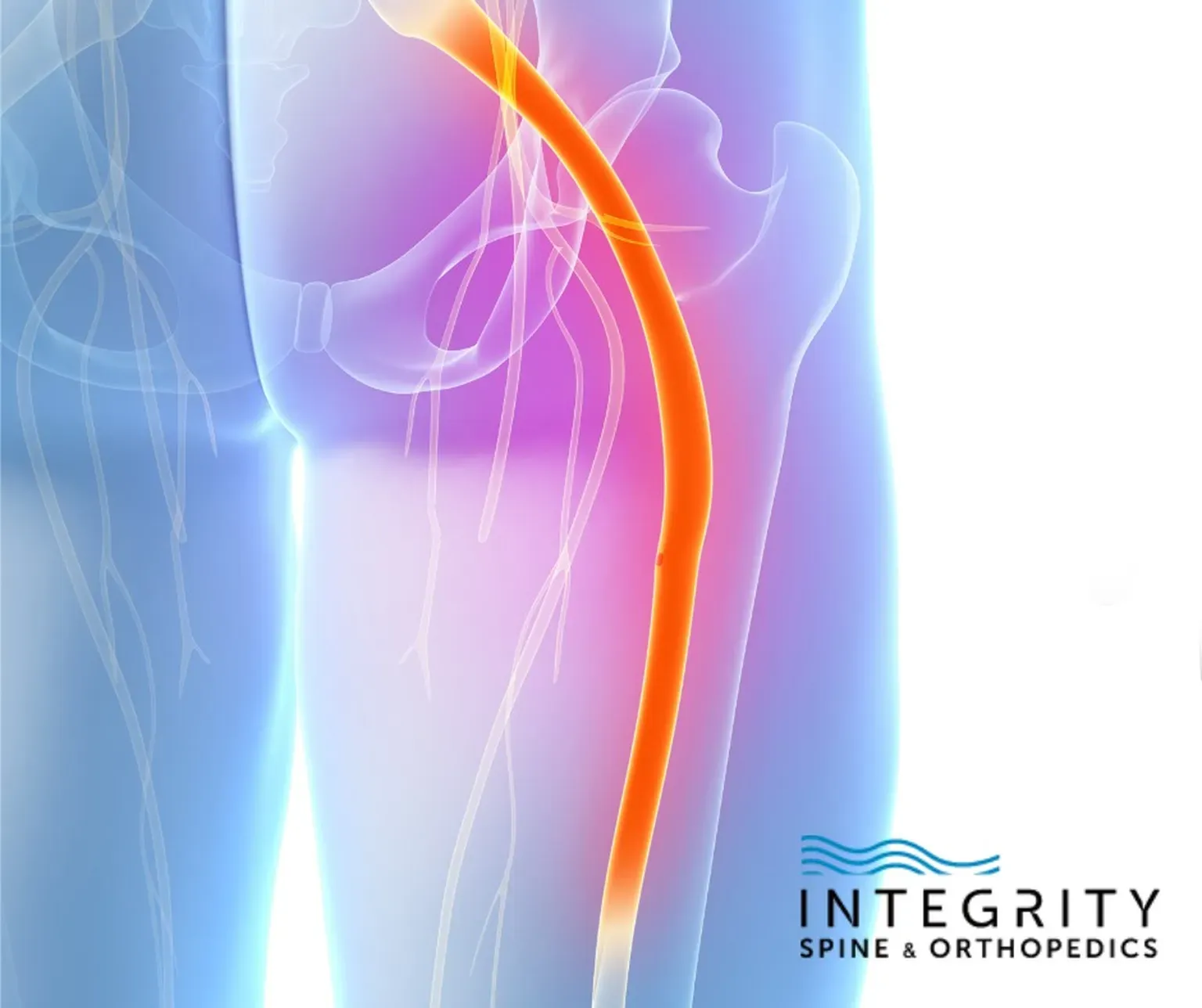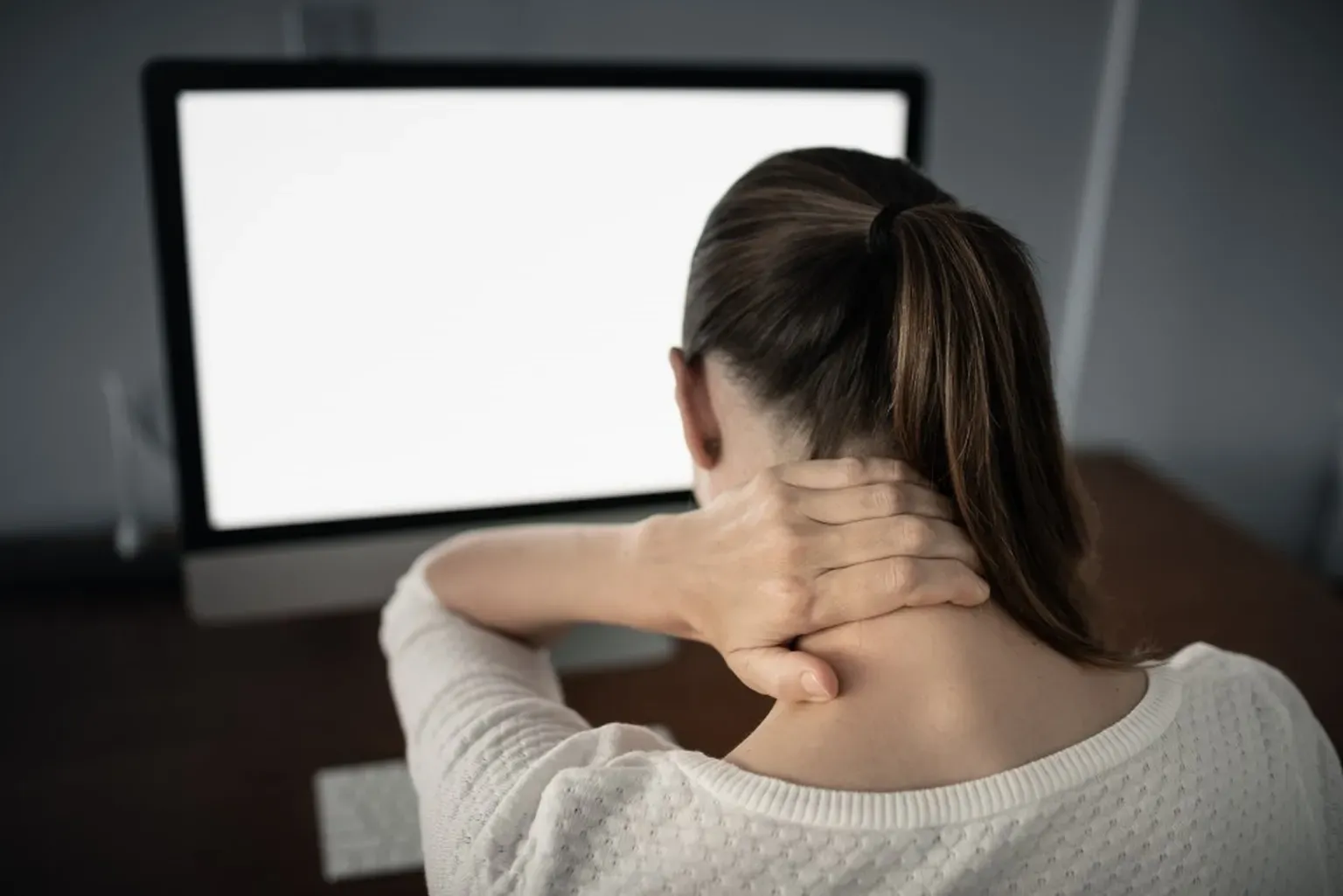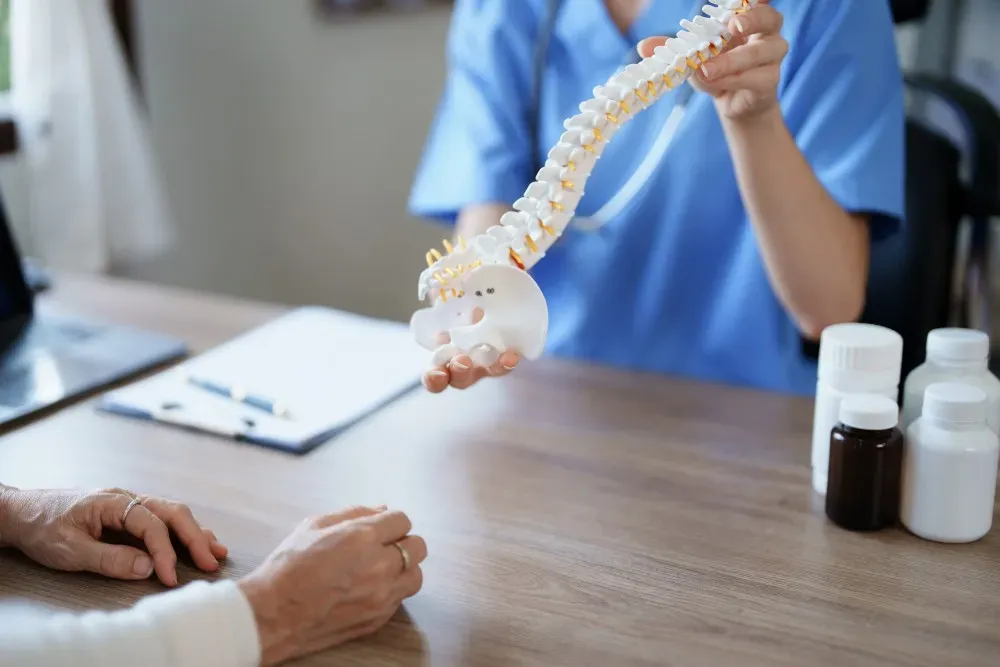Neurosurgery & Orthopedic Surgeons in Jacksonville

What is the Sciatic Nerve?
The sciatic nerve is the biggest and longest nerve in the human body. In reality, the “nerve” is not a single nerve. It’s actually made up of 5 nerve roots that cluster in the lumbar spine and sacrum.
WHAT IS THE SCIATIC NERVE?
The sciatic nerve is the biggest and longest nerve in the human body. In reality, the “nerve” is not a single nerve. It’s actually made up of 5 nerve roots that cluster in the lumbar spine and sacrum. From the base of the spine, the sciatic nerve travels down the buttock, back of the thigh, calf, heel and sole of the foot on each side of the body.
The sciatic nerve is responsible for a large number of motor functions and sensations in the lower extremities. Among other functions, it controls muscular movement for pointing the feet and toes upward and downward, bending the knee and hip abduction. Additionally, the sciatic nerve supplies sensation to the skin of most of the lower legs and feet.
The sciatic nerve is also responsible for causing a painful set of symptoms known as sciatica. It’s estimated that between 10-40% of the population has experienced sciatic pain. Keep reading to learn more.
WHAT IS SCIATICA?
Sciatica describes a type of nerve pain that occurs when the sciatic nerve is compressed or inflamed. Sciatica is not a condition; rather, it’s a symptom of different conditions that cause compression, narrowing and inflammation in the spine. Sciatic pain is often a symptom of the following spinal conditions:
- Herniated disc. Age-related degenerative changes in the spinal discs may cause one or more to bulge, shift out of place, tear or leak disc fluid into the spine. The movement may cause the disc or fluid from inside the disc to compress the nearby sciatic nerve, causing pain and irritation. Disc herniation is the most common cause of sciatic pain.
- Spinal stenosis. Spinal stenosis develops when the open spaces within the spine narrow, leaving less room for the nerve roots to pass through. Soft tissue inflammation, bone spurs, damaged spinal discs, thickened ligaments and other degenerative changes can all cause spinal narrowing that leads to nerve compression.
- Arthritis. Arthritis of the spine causes cartilage erosion and joint degeneration that leads to pain, stiffness, swelling and inflammation. Spinal arthritis may also cause the development of bone spurs — bony overgrowths that protrude into the spinal canal and compress nearby nerves.
- Degenerative disc disease. Degenerative disc disease occurs when natural, age-related changes in the spine cause the breakdown and deterioration of one or more spinal discs. Degenerative changes can lead to disc herniation, disc collapse, bone spurs, inflammation, spinal narrowing and other injuries that compress nearby nerves.
In addition to the causes listed above, a traumatic incident like a car accident or sports collision can directly damage the sciatic nerve, causing pain and inflammation.
The defining characteristic of sciatica is one-sided pain that radiates from the low back to the buttock, thigh and calf. The pain may feel sharp, deep and aching, or burning. It may be aggravated by certain movements, like sitting for long periods of time, coughing or sneezing. For some people, sciatica is painful but doesn’t affect their ability to perform daily activities. For others, the pain is severe enough to make walking, standing or sitting difficult.
Other symptoms you may experience are weakness, muscle spasms, cramping, numbness and tingling in the leg and foot. Sciatic pain and symptoms can occur anywhere along the path of the nerve.
HOW IS SCIATIC PAIN TREATED?
In many cases, sciatica is an acute condition that resolves within a few weeks using at-home care measures. Your doctor may advise you to use hot and cold compresses and take an over-the-counter pain medication to help ease pain and inflammation. Additionally, your doctor may recommend specific stretches and exercises to relieve muscle tension and pressure in the low back. While many people are tempted to rest frequently when they have pain, try to remain as active as possible while you’re healing. Sitting and being immobile for long periods will worsen sciatic pain, inflammation and other symptoms.
If you continue to experience pain after several weeks, your doctor may prescribe stronger pain medications, muscle relaxants or a corticosteroid injection. Corticosteroid injections only provide temporary relief, but they buy you time to build up your strength and regain normal mobility. Your doctor may also recommend a course of physical therapy. A physical therapist can help you find exercises that relieve pressure on the sciatic nerve. Additionally, a therapist can work with you to increase strength in your core, low back and legs — the key muscles that protect and support your spine.
When conservative measures aren’t effective, it’s time to consider surgery. At this point, your doctor will probably take imaging exams to determine if a herniated disc, bone spur, arthritis or another injury is the source of your sciatic pain.
At Integrity Spine and Orthopedics, our surgeons perform 2 minimally invasive procedures that can effectively treat sciatic pain and symptoms.
- Discectomy. During a discectomy, minimally invasive techniques are used to remove spinal disc material that’s compressing the sciatic nerve.
- Laminectomy. During a laminectomy, minimally invasive techniques are used to remove a portion of vertebral bone that’s compressing the sciatic nerve. A laminectomy relieves pressure and opens up more space in the lumbar spine.
Our minimally invasive spine procedures performed out of Jacksonville, FL, require smaller incisions and less recovery time than traditional spine surgeries. Our procedures are performed on an outpatient basis, so we can have you home the same day as surgery. Many of our patients are up and active again within a few weeks following surgery.
INTEGRITY SPINE AND ORTHOPEDICS TREATS BACK AND JOINT PAIN
Integrity Spine and Orthopedics offers several services to treat a range of spine and joint conditions. We provide exceptional orthopedic care, pain management and minimally invasive spinal procedures. Our team of orthopedic surgeons is board certified and fellowship trained in outpatient, minimally invasive spine surgeries.
If you’re suffering from pain, reduced mobility and a decrease in your quality of life, call us today to schedule an appointment or request a free MRI review.




